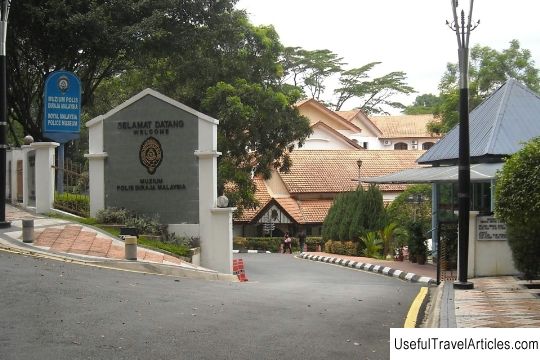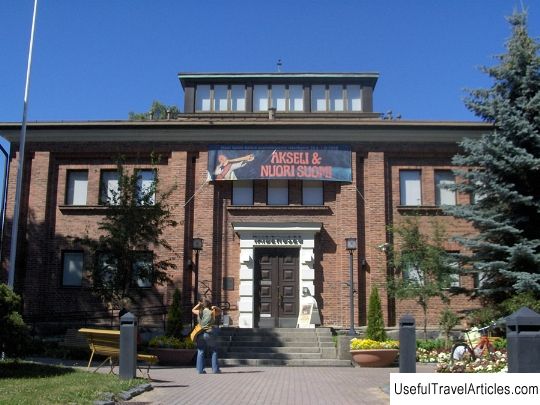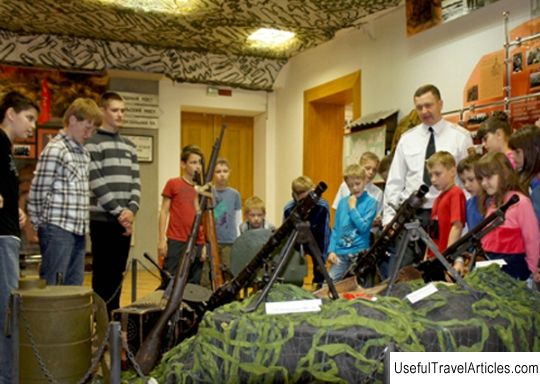Police Museum in Finland, Tampere Resort
Rating: 8,0/10 (472 votes)  The Police Museum is a museum dedicated to the history and modernity of the Finnish police. Located in the complex of the Higher Police School in Tampere, Finland. The museum was opened in 2004 at the Higher Police School, received national status and soon became popular. The entrance to the museum is free. Since 2011, Finnish museums have been awarded the status of"European Museums of the Year", which has increased the fame of the local police museum. The Tampere Police Museum is one of the youngest police museums in Finland and the world. Most of the exhibits presented in the museum today were donated by ordinary citizens. In this regard, the exposition has grown steadily and acquired astonishing proportions. It stores and displays about 60 thousand photographs, one thousand documentary and feature films, about 6 thousand various items, related to the work of the police. The administration of the museum, in addition to exhibition activities, organizes research work aimed at improving the work of the police. In addition, there is a Children's Police Station at the museum, where they tell about the work of the police in a form adapted for children's perception. Also, any little visitor can feel like a real guardian of law and order or be"behind bars" and get a real life lesson that will help in the future not to commit any atrocities. Museum"Workers' Quarter Amuri" Museum"Workers' Quarter Amuri" - an unusual museum,"city within a city", occupying an entire block in Tampere, Finland. Here are the buildings that have survived from the late 19th century. In the workers' quarter, the interiors of the apartments where Finnish workers lived at different times from 1882 to 1973 have been recreated as accurately as possible. There are five buildings here today, arranged in the same way as in the past. In addition, there are outbuildings here. After visiting the typical cafe"Amurin Helmi" of the past, you can have a cup of coffee, try the traditional Tampere hearth bread or sweet pastries. In summer, the quarter hosts thematic excursions, concerts, theater performances, and an exhibition of folk art. The traditional autumn fair is very popular among the townspeople. Workers' quarters began to be actively built up in the middle of the 19th century due to the increase in the number of workers in the Tempere factories. The city authorities began construction of small wooden houses behind Kortelahdenkatu street. The area was built up by 1861, soon the land was sold at auction. Over time, the area expanded west of Sotkankatu Street. The new area was named in honor of the Anglo-Boer War"Land of the Boers". Soon the name was changed to"Upper Amuri", derived from the name of the Amur River. After a while, most of the wooden buildings were demolished due to the fact that it was decided to build multi-storey buildings. Only one block has been preserved as a historical monument. Its transformation into a museum began in 1975 when the cooperative store was remodeled into a 1930s style store. By the beginning of the 90s, the interiors of all residential and auxiliary premises were recreated. At the same time, a cafe, a shop and an exhibition hall were created. Today, the workers' quarter museum is open only during the summer, and the cafe, shop and exhibition hall are open all year round. One of the oldest premises is the common kitchen of one of the apartments, which has been preserved since 1880. the house was divided into two halves and two doors led from the kitchen to the living rooms. There was a common stove in the kitchen, which residents took turns using. The food was cooked in a pot or tagan on a tripod. The laundry was washed in a trough next to the stove. In some houses, a boiler was built into the stove wall, in which the linen was boiled. The apartments, preserved in the Amuri quarter, tell about the history of their tenants, whether they are girls from a cotton factory, or an old seamstress, and about the history of the city and the whole country: about peacetime and war years. Moving from one exhibit to another, you travel back in time. All exhibits are original - household items, furniture, clothes of the former owners. History of dwellings and their owners, most of the exhibits are detailed in brochures handed out to visitors along with the admission ticket.        We also recommend reading Moomin Museum in Finland, Tampere resort Topic: Police Museum in Finland, Tampere Resort. |




